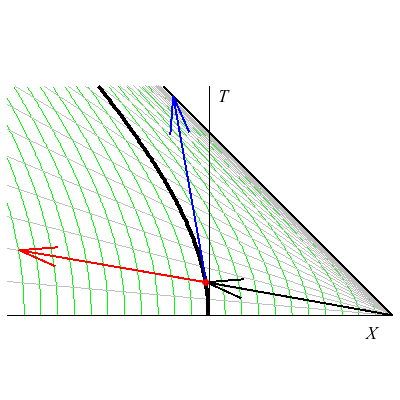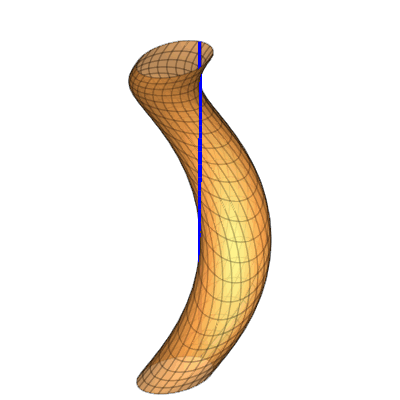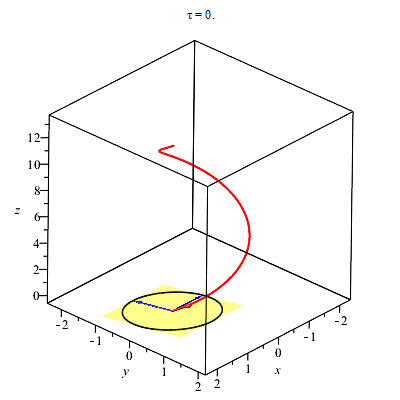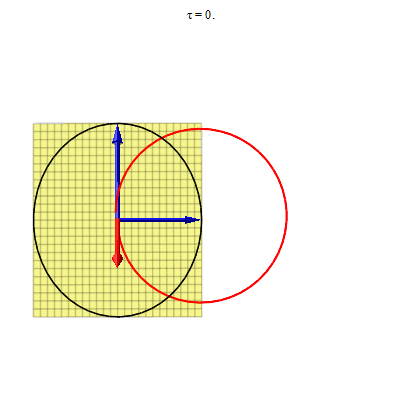Abraham, Lorentz, (Poincare), Fermi and Gauss
(and a whole lot of others):
classical electromagnetic mass,
a pedagogical example
advertised as:
Abraham, Lorentz, Fermi and Gauss: energy and
momentum in classical electrodynamics
bob jantzen [not Robert
Johnson as advertised in Campus Currents :-) ]
Villanova University Physics talk, 3:00pm, Friday, October 26, 2012 Mendel 258
[refreshments at 2:45]
Abstract.
Gauss's law is pretty important yet we don't teach it here at Villanova in
multivariable calculus. We almost get to the Frenet-Serret torsion, but
understandably stop short. The latter explains the Thomas precession of the
electron.
The classical model of the electron developed in the early days of special
relativity by Abraham and Lorentz is a nice pedagogical example of the importance
of Gauss's law in the 4-dimensional spacetime context. I will try to show how
Gauss's law, together with Maxwell's equations, leads to a conserved
energy-momentum 4-vector for the free electromagnetic field (perhaps familiar to
professors) and what it does imply for the nonvacuum field of a classical
electron (not so familiar, hence Fermi in the title). I will try to keep
undergraduates in mind as I present the details.
|
 |
|
electron accelerating backwards due to forward constant electric field
(hyperbolic motion) |
Some of the history behind this:
History of Special Relativity and Lorentz transformations
1905 Lorentz transformations (named by Poincare)
1905 Einstein Special Relativity
1907-1908 Minkowski spacetime diagrams
History of
Electromagnetic Mass: classical electron Coulomb field has mass like
properties, "4/3 problem"
1881 JJ Thompson
1902 Abraham (sphere period, so not relativistically invariant)
1904-1904 Lorenz (contractile electron: sphere in rest frame)
1905-1906 Poincare stresses (stability)
1911 Max von Laue (closed systems)
1922 Enrico Fermi (Born rigidity correction of Abraham-Lorentz model)
1960 Rohrlich rediscovery
1983 Schwinger (Poincare stresses)
The
spacetime diagram of the world tube of a spherical electron shell in
circular orbit undergoing
Born rigid motion as assumed by Fermi (suppressing one spatial dimension, so
showing the equatorial plane circle of the electron sphere) is basically
relativistic corkscrew pasta, here shown with the central
inertial time axis (blue). The horizontal grid lines on the surface are the
local rest spaces (planes) while the vertical grid lines are the world lines
points fixed on the circular cross-sections which are fixed in the
Fermi spatial
coordinate grid.

The spatial Fermi coordinate grid in the local rest space (plane) tries to
resist the rotation about the central axis due to the twisting of the world
tube, but ends up rotating anyway, following Fermi-Walker transport, which
corresponds to aligning the grid with torque-free gyroscope directions.

The 4-velocity vector is shown in red (the unit tangent), the 4-acceleration
vector points towards the central time axis and is aligned with the unit normal,
which is shown in blue together with the binormal vector in blue, while
the Fermi-Walker "locally nonrotating axes" which coincide with them at t = 0
are shown in black. The yellow square representing the local rest space (plane)
is aligned with the
Fermi-Walker axes.
Since the spin angular velocity of the FW axes moving in the retrograde
direction with respect to the acceleration 4-vector is larger than the orbital
frequency by a Lorentz gamma factor, those axes rotate backwards at the
difference frequency. This is the
Thomas precession
of the classical electron in circular orbit around a nucleus. For the speed of
half the speed of light, the gamma factor is only about 1.15 and the net angle
per revolution of this precession of the FW axes is about 55 degrees. Here is a
top view, showing the Lorentz reverse contraction of the yellow square in the
direction of motion (due to projection rather than length measurement) and the
Thomas precession of the black FW axes.

If you find this interesting maybe you would like to take my
9:30 MWF Differential Geometry class Spring
2013 semester?
Another interpretation of this surface is as an example of a toy model for
string theory. The tubular world sheet is a timelike surface in the spacetime
containing one timelike direction and one spacelike direction, and is the
history of a ``closed string" (the circular loop of the construction) as it
moves in spacetime. The horizontal plane cross-sections of the surface are the
string as seen by the inertial observer at rest in this coordinate system at a
moment of its inertial time. An accessible discussion of such a toy model may be
found in a recent book
Differential Geometry and Manifold Theory by Stephen T. Lovett.



